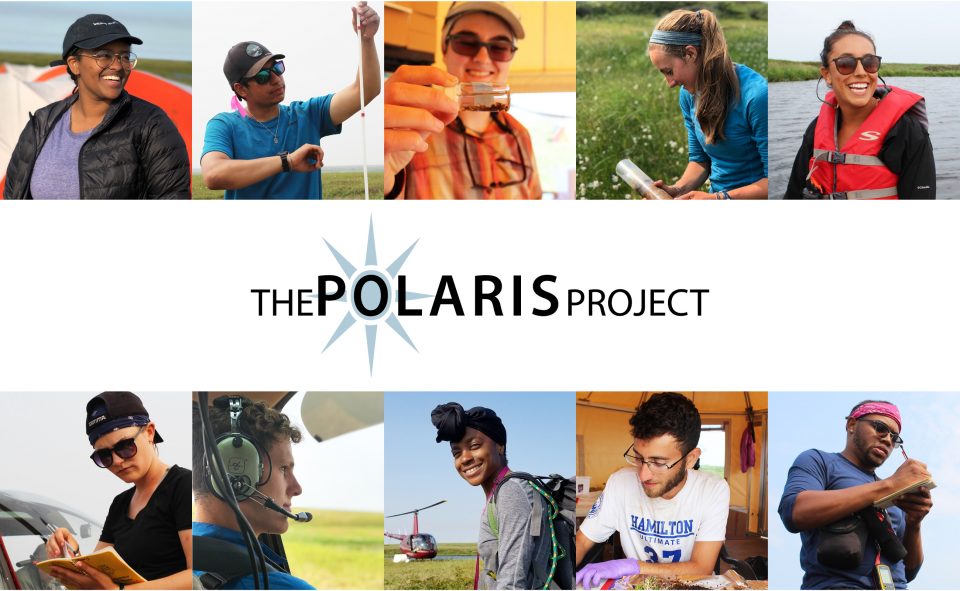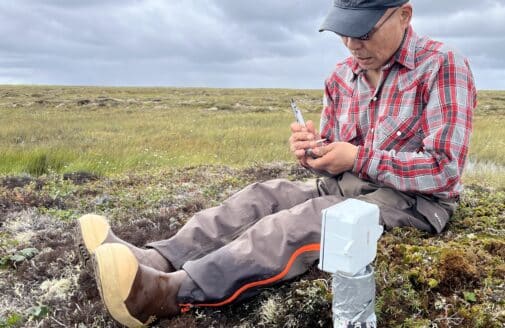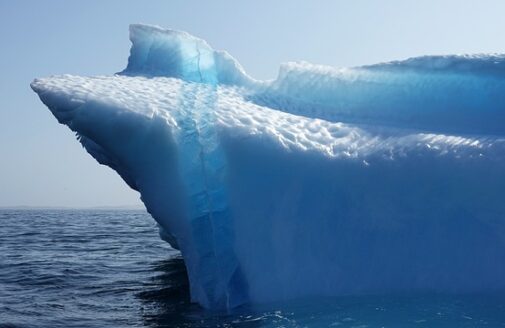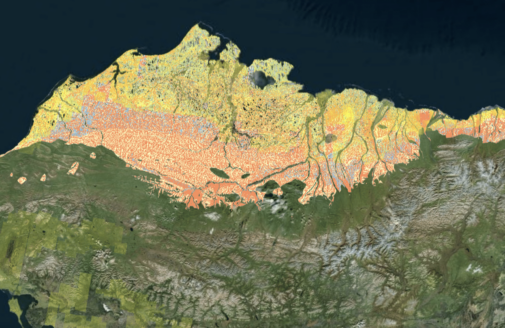The Polaris Project class of 2019

Learn more about the Polaris Project and read student blog entries at thepolarisproject.org.
Mike Moubarak is a biology and applied math student from Hamilton College. His research focuses on tundra wildfire. “I’m trying to create a field based method for calculating the amount of carbon released during a tundra fire,” he said. Moubarak’s work will help develop better methods of accounting for carbon release to the atmosphere. “I want to strengthen the connection between science and the public through research relevant to real world problems and practicing good communication.”
Aqua Sanders is a marine science student from The University of Texas at Austin. Her research strives to answer the question “does permafrost thaw-driven ground collapse create a nitrous oxide source?” This research is significant to the greater climate change conversation because nitrous oxide is 300x more potent than carbon dioxide at trapping heat in the atmosphere, and could increase the warming rate. Sanders is pursuing a career as an Arctic scientist.
Anneka Williams is a biology and earth/oceanographic sciences student at Bowdoin College. Williams’ research explores what role plants play in methane emission in the Arctic, and what effect tundra fires have on plant-mediated methane transport. “Methane emissions contribute to climate change, so understanding the role plants play in total emissions is important,” Williams said. After Polaris, she hopes to earn her Ph.D. within the field of earth sciences and continue to do remote field work.
Rhys MacArthur is an ecology and environmental justice student at Hampshire College. She was also a member of last year’s group, and was eager to return to the field this year. MacArthur is studying the effect fire has on vegetation composition, nutrient cycling, and ecosystem function. “It’s absolutely crucial that we understand how fires change vegetation in order to accurately project the carbon emissions coming from this region,” MacArthur said. She also interned at WHRC this summer with Assistant Scientist Dr. Sue Natali.
Henry Henson is a biology and environmental studies student at St. Olaf College. Henson’s research explores whether permafrost thaw will change the sediment of adjacent lakes and influence methane flux. “As the climate warms, more permafrost will thaw, and more fires will occur. This will likely result in the increase of ground destabilization and slumping of old and, until recently, unexposed organic material into water bodies,” Henson said. “Once this movement has occurred, more decomposition and methane ebullition may occur. This may further the greenhouse warming feedback by adding a large amount of methane to the atmosphere.”
Lucy Packer is a conservation biology and environmental studies student at Warren Wilson College. Packer is studying how wildfires affect aquatic macroinvertebrate communities. “Aquatic invertebrates can be indicators of water quality,” Packer said. “Changes in those communities can be used to determine if and how the ecosystem is changing.”
Ellen Bradley is a biology and environmental studies student from Gonzaga University. Bradley is investigating how tundra fires influence phytoplankton communities in the lakes of the Yukon Kuskokwim Delta, 4 years after the 2015 burn. “If fire allows more nutrients to enter the lakes, likely increasing phytoplankton populations, this will have an influence on how the entire ecosystem functions, both trophically and in how biogeochemical processes occur,” Bradley said. In the future, she plans to conduct research aimed at understanding how climate change will influence indigenous people, in a way that will support these communities.
Natalie Baillargeon is an environmental science and policy student from Smith College. Baillargeon is studying how tundra fire impacts vegetation and vegetation nutrients. “In the wet tundra of the Yukon Kuskokwim Delta (YKD), fire has always been generally unusual. With climate change, there will likely be an increase in fire frequency and severity in the YKD, and in Alaskan tundra in general,” Baillargeon said. Baillargeon also interned this summer with the WHRC communications team.
Gabe Duran is a biology and geography/environmental systems student from the University of Maryland, Baltimore County. Duran is investigating how fire might influence the rate at which water moves through soils and if this, in turn, affects the movement of nutrients in groundwater through the landscape. “I would love to continue with Arctic research and attend graduate school in water resources or civil engineering,” Duran said. “I want to focus my work more on integrative research and study where the sciences and social justice can cross.”
Ellis Lyles is an environmental science conservation and restoration student from Loyola University Chicago. Lyles is investigating how tundra wildfires are affecting leaf and berry production. He’s specifically interested in edible or medicinal plants that are important to Arctic Indigenous communities. “I want to work with black/African communities and get them more involved in STEM programs,” Lyles wrote.







